|
|
|
1Mechanisms involved in pathology associated with
asthma
A generalized tracheobronchial hyperirritability is a central
aspect of asthma.
Lung function exhibits
fluctuations throughout the day with dyspnea more apparent at
night and in the early morning.
Airway reactivity varies in all individuals as a function of
exposure to oxidant air pollutants as well as following
respiratory tract viral infections.
Furthermore, allergens produce rapid
increases in airway responsiveness (reactivity) which remains
heightened for weeks.
With significant allergen exposure,
obstruction may occur rapidly and last for some time.
The current working framework for the understanding of
asthma is based on the presence of continual airway inflammation
which can be exacerbated under certain circumstances.
Asymptomatic asthmatic patients therefore exhibit the
presence of inflammation confirmed by endobronchial biopsy.
The airway is characterized as edematous with eosinophil,
neutrophils, and lymphocyte infiltration. Increased
capillary density with increased cellularity represents
probably the most common finding.
Overall asthma manifestation is probably a complex result
of interactions between airway inflammatory cells,
inflammatory mediators, cytokines, and surface epithelium.
Cell types most likely involved include mast cells, eosinophils, epithelial cells, and lymphocytes.
Also, there
is the possibility of macrophage and neutrophil involvement.
Cells primarily involved release mediators which include:
histamine, leukotrienes (C, D & E), bradykinin,
platelet-activating factor, and prostaglandins (E2,
F2 Bradykinin Histamine (as the chloride)
Prostaglandin F2 Prostaglandin
D2
Arachidonic Acid Pathway (Leukotriene,
Prostaglandin, Thromboxane Synthesis
Leukotriene C4
Leukotriene D4
Leukotriene E4
Leukotriene B4
Platelet Activating Factor,
1-alkyl, 2-acetyl phosphatidylcholine
The above mediators produce an immediate, intense
inflammation that is characterized by vascular congestion, edema,
and bronchoconstriction.
Leukotrienes which act to promote airway smooth
muscle contraction as well as mucosal edema also may inhibit
mucociliary transport and increase mucus production.
Chronic events follow these initial actions with
chemotactic factors recruiting eosinophils, polymorphonuclear
leukocytes, and platelets to the reaction site.
"Chemokines:
(chemoattractant cytokines) are short soluble peptides (70-90
amino acids) which can be divided into two groups.
Alpha
(or C-X-C) chemokines contain a single amino acid between the first
and second cysteine residues, and are primarily involved in
neutrophil activation.
Beta (or C-C) chemokines have adjacent
cysteine residues and are generally involved in activation of
monocytes, lymphocytes, basophils and eosinophils"6.
These chemotactic factors include eosinophil and
neutrophil anaphylactic factors and leukotriene B4.
These
recruited cells in addition to macrophages already present as well
as the bronchial epithelium provides sources for additional
mediators enhancing immediate and cellular phases.
Airway epithelial cells serve both as a
target and a contributor to the inflammation process since they
amplifying the bronchoconstrictive aspect by liberating endothelin-1
and enhance vasodilatation by liberation of nitric oxide (
These cells also produce cytokines including:
Granulocyte-macrophage
colony stimulating factor (GM-CSF)
Interleukin (IL)8
Rantes
Eotaxin
![]() Airway reactivity may vary and with heightened reactivity more
obvious and severe symptoms present and more aggressive
pharmacotherapy are required.
Airway reactivity may vary and with heightened reactivity more
obvious and severe symptoms present and more aggressive
pharmacotherapy are required.
![]() Of these two insults, viral
infections are more predominant in their long-term effects on
airway reactivity.
Of these two insults, viral
infections are more predominant in their long-term effects on
airway reactivity.
![]() ,
& D2).
,
& D2).

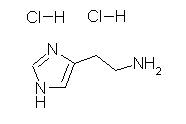
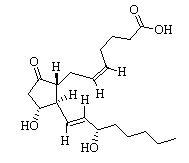
![]()


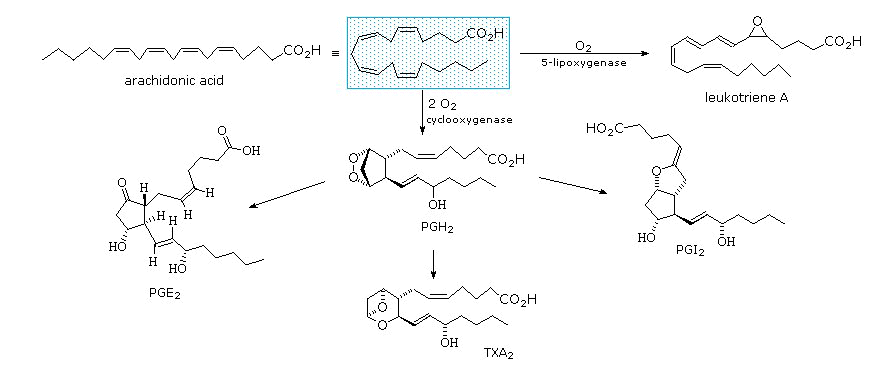
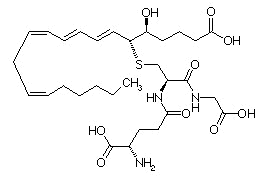
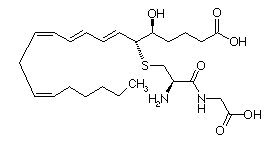
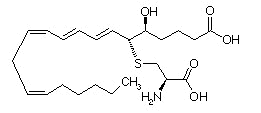
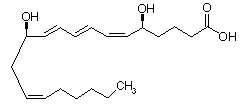
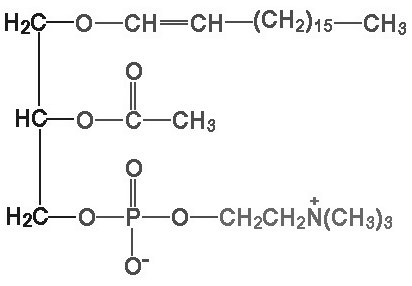
![]() ), PGE2 as
well as the 15-hydroxyeicosatetranoid acid (15-HETE)
arachidonic acid metabolic products.
), PGE2 as
well as the 15-hydroxyeicosatetranoid acid (15-HETE)
arachidonic acid metabolic products.
Eotaxin is an eosinophilic chemoattractant cytokine which is upregulated in allergic airways inflammation.
|
|
|
8The accumulation of eosinophilic leukocytes in the lungs of asthmatic patients is probably due to the effect of chemoattractant small molecules.
Eotaxin has been identified as a potent eosinophil chemoattractants that is produced by several different cells in the stimulated by interleukin-4 and interleukin-13, both of which are synthesized by T-helper (Th)2 lymphocytes.
8Eotaxin interacts with the eotaxin receptor which is a C-C chemokine receptor (CCR)3.
Small molecules have been synthesized without interfere with eotaxin binding to its chemokine receptor, suggesting a possible therapeutic intervention that will limit eosinophilic recruitment in the lung with subsequent possible prevention of damage and pulmonary dysfunction.
8The eosinophil represents a white cell that has a two-lobed (bilobed) nucleus and has cytoplasmic granules which stain pink following exposure to eosin.
It has been suggested that eosinophils are important in the immunological defense system against helminths (worms).
Parasitic worms causing immunological response particularly towards TH2 lymphocytes which regulate IgE production. Immunoglobulin E binds to mast cells providing the means for specific antigen recognition (especially important in acute responses to worms).
TH2 lymphocytes regulate eosinophil accumulation important chronic responses to worms.
In eosinophils accumulating around these parasites then become stimulated to release O (free radicals) molecules as well as toxic proteins including basic protein, eosinophil peroxidase, eosinophil cationic protein and eosinophil-derived neurotoxin.
According to this view, allergy may be a host response originally developed against helminths but now triggered in an inappropriate manner by other stimuli.
The particular importance of eotaxin is that it provides the mechanisms by which selective eosinophil accumulation may be mediated, given that other chemoattractants have more generalized effects (i.e. they promote neutrophil attraction; these other chemoattractants include C5a, leukotriene B4 and platelet-activating factor)
8Concerning the eotaxin receptor: there been > 50 chemokines identified which mediate effects through at least 15 different 7-transmembrane-spanning, G-proteins-coupled receptors.
Most chemokines produce effects by mediation through several different receptors; however, eotaxins are fairly unusual in that there signaling process involves a single receptor, the CCR3 receptor which has been cloned and noted to be highly expressed on eosinophils.
The CCR3 receptor has been found also on TH2 lymphocytes which regulate eosinophilic recruitment.
Following eotaxin binding with theCCR3 eosinophil surface receptor a number of molecular events occur in including:
Calcium mobilization
CD11b up-regulation
Mitogen-activated protein kinase activation
Oxygen radical production
Actin polymerization and
Receptor confomrational change which is connected to granule release and chemotaxis.
Mechanisms for CCR3 internalization have also been described.
|
|
|
|
|
|
|
|
1 Whereas the mast cell is important in the early stages of the reaction, eosinophils play a central role in the infiltrative aspect.
Granular eosinophilic proteins (eosinophilic cationic protein & basic protein) as well as oxygen-derived free radicals probably destroyed the airway epithelial lining medicine and sloughed into the bronchial lumen as 5Creola bodies.
|
|
5"Creola bodies ...are characterized... by cilia, the evenly distributed chromatin, and the smooth nuclear membranes" |
1 Damage described above not only affects barrier and secretory processes but also causes additional chemotactic cytokine production which promotes additional inflammatory responses.
Such localized processes may translate to generalized reactions secondary to activation of neurogenic inflammatory pathways possibly by direct excitation of sensory nerve endings.
T lymphocytes are central to the inflammatory response with an increased presence in the asthmatic airway; furthermore,T lymphocytes are activators of cell-mediated immunity through cytokines as well as humoral (IGE) immune reactions.
T- activated lymphocytes which
have been harvested from asthmatic patient lungs express mRNA
for those cytokines involved in eosinophil & mast cell
recruitment + activation. With respect to subpopulations,TH1
&TH2 lymphocytes both probably influence asthma
responses. For example, cytokines IL2 and interferon (IFN)
![]() , Substances Produced by TH1 Lymphocytes promote
differentiation & growth of Type B lymphocytes and cause
macrophage activation, Respectively. Similarly IL-4 &
IL-5, TH2 cytokine products promote B-cell growth
and immunoglobulin secretion [IL-4] and eosinophil
proliferation, differentiation, & activation [IL-5].
, Substances Produced by TH1 Lymphocytes promote
differentiation & growth of Type B lymphocytes and cause
macrophage activation, Respectively. Similarly IL-4 &
IL-5, TH2 cytokine products promote B-cell growth
and immunoglobulin secretion [IL-4] and eosinophil
proliferation, differentiation, & activation [IL-5].
1 Cytokine production:
This process is an important, vital component in asthma inflammatory processes. Cytokines synthesized and released from these inflammatory cells discussed earlier as well as from epithelial cells, fibroblasts, endothelial cells, and airway smooth muscle activate many specific cell-surface receptors.
Cytokines that are thought to most important in asthma pathogenesis and are secreted by T lymphocytes are:
IL-3 -- lengthens mast cell surviva
IL-4 & IL-13 -- activates B lymphocytes IgE synthesis and adhesion molecule expression.
IL-5 -- differentiation and lengthens eosinophil survival.
Pro- inflammatory cytokines
which also could amplify the inflammatory response include
IL-1B, IL-6, IL-11, tumor necrosis factor ![]() (TNF-
(TNF-![]() )
and GM-CSF
.
)
and GM-CSF
.
|
|
1 McFadden, E.R., Jr. "Asthma: Diseases of the Respiratory System" in Harrison's Principles of Internal Medicine, 15th Edition (Braunwald, E., Fauci, A.S., Kasper, D.L., Hauser, S.L, Longo, D.L. and Jameson, J. Larry, eds) pp. 1456-1463, McGraw-Hill Medical Pubishing, Division, New York, 2001
2 Kelley, H. William, "Asthma" in Pharmacotherapy: A Pathophysiologic Approach, (Dipiro, J.T., Talkbert, R.L. Yee, G.C., Matze, G.R., Wells, B.G. and Posey, L. Michael, eds.) pp 430-459. McGraw-Hill Medical Pubishing, Division, New York, 1999.
3Spencer SM., Sgro JY., Dryden KA., Baker TS., Nibert ML. (1997) Rhinovirus 14 (3D image reconstruction from electron microscopy data) Journal of Structural Biology. 120(1):11-21
4Attribution: Michigan State University Website:
5State University of New York, Upstate Medical University, Cytotechnology, On-Line Courseware,
6Steve Dewhurst, Ph.D., Structure of the CC-chemokine, RANTES, (c) University of Rochester and Stephen Dewhurst, 1999
7Ealick SE, Recombinant Human Granulocyte-Macrophage Colony-Stimulating Factor, Cornell University
Walter MR, Cook WJ, Ealick SE, Nagabhushan, TL, Trotta, PP and Bugg, CE. Three-Dimensional Structure of Recombinant Human Granulocyte-Macrophage Colony-Stimulating Factor, J. Mol. Biol. 224:1075-1085 (1992).
Reichert P, Ealick SE, Cook WJ, Trotta P, Nagabhushan TL, Bugg CE. Crystallization and Preliminary X-ray Investigation of Human Granulocyte-Macrophage Colony Stimulating Factor, J. Biol. Chem. 265(1):452-453 (1990)
8Williams, TJ and Conroy, TM Eotaxin and the attraction of eosinophils to the asthmatic lung, Respir Res 2001, 2: 150-156
9McFadden, Jr., E. R., Diseases of the Respiratory System: Asthma, In Harrison's Principles of Internal Medicine 14th edition, (Isselbacher, K.J., Braunwald, E., Wilson, J.D., Martin, J.B., Fauci, A.S. and Kasper, D.L., eds) McGraw-Hill, Inc (Health Professions Division), 1998, p 1422.
10Daroca, P, Lung and Respiratory System
Review, Tulane University Pathology, (Figure & caption
attribution)
|
This Web-based pharmacology and disease-based integrated teaching site is based on reference materials, that are believed reliable and consistent with standards accepted at the time of development. Possibility of human error and on-going research and development in medical sciences do not allow assurance that the information contained herein is in every respect accurate or complete. Users should confirm the information contained herein with other sources. This site should only be considered as a teaching aid for undergraduate and graduate biomedical education and is intended only as a teaching site. Information contained here should not be used for patient management and should not be used as a substitute for consultation with practicing medical professionals. Users of this website should check the product information sheet included in the package of any drug they plan to administer to be certain that the information contained in this site is accurate and that changes have not been made in the recommended dose or in the contraindications for administration. Advertisements that appear on this site are not reviewed for content accuracy and it is the responsibility of users of this website to make individual assessments concerning this information. Medical or other information thus obtained should not be used as a substitute for consultation with practicing medical or scientific or other professionals. |